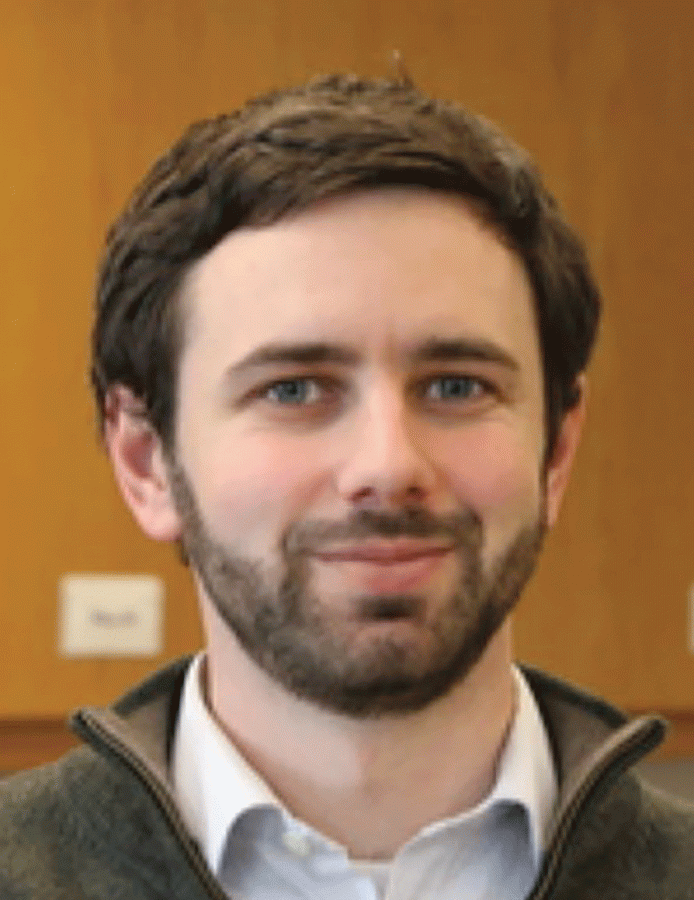Professor Paul Hess Presents on Particles
Colgate is in the process of looking for and welcoming new faculty members. Currently, in the Physics and Astronomy department, the competition is down to three quality candidates, whose final test is to give a lecture to students and faculty regarding the research they have done so far in their careers and hope to continue at Colgate.
The first candidate, Paul Hess, took the stage in Ho 101 on Tuesday, January 22. Hess, currently a visiting professor at Middlebury College, waited for his chance to convince his listeners that he knows what he’s talking about. His presentation, “How Trapping Will Set You Free,” caught the interest of the eager students in the audience. After introducing himself, he discussed trapping positive ions with electric forces in order to study quantum magnetism.
Hess explained that this phenomenon is achieved by using four plates that create a time- varying electric potential in the shape of a saddle. Understanding that this may be a difficult concept to grasp, Hess offered a more tangible example. Imagine you have a horse’s saddle in front of you, anchored on a spinning surface. If one tried to put a ball on the saddle while it was not rotating, it would just fall off. However, if the saddle spins fast enough, it will appear to form a bowl. If you carefully placed a ball in the middle of the spinning saddle, it could stay trapped in the center. This example represents a potential that varies with time, and is the method Hess used to conduct his research, with ions in place of balls.
Hess went on to describe his past and current research, and discussed possible future directions. His research is highly relevant to the quantum realm of physics and promises to provide further insights into the world of the very tiny. However, the other important components of his presentation were those that make a good professor, not just a good researcher.
Sophomore Jake Freedman noted that Hess successfully managed to make complex concepts easily accessible.
“His presentation of [the trapping method] was terrific because he showed a video of a solid saddle — rather than one made of electric fields — rotating to form a bowl to demonstrate what was happening to the atoms. He clearly understands the importance of giving students a conceptual understanding of what’s going on,” Freedman said.
Another notable aspect was Hess’ eagerness to make the lecture more of a discussion between himself and the audience. Hess did this not by just answering questions at the end of the lecture, but by inviting and answering questions throughout the entire presentation.
“Hess’ use of visual presentation and casual discussion made his talk both engaging and easy to follow. He encouraged everyone to ask questions and speak up, even in a larger lecture, which I appreciated. He also answered all questions thoroughly and effectively, paying special attention to concepts he knew would be more confusing,” sophomore Charlotte Reeves said.
Hess’ presentation made for a great start to the candidate lecture series. Two more professors who hope to earn a position among Colgate’s physics faculty will present their research on February 5 and 12. While faculty have the final say in which candidate gets hired, they are eager to hear student opinions on the candidates, so drop in and listen if you want a chance to weigh in.
Contact Abby Blair at [email protected].







